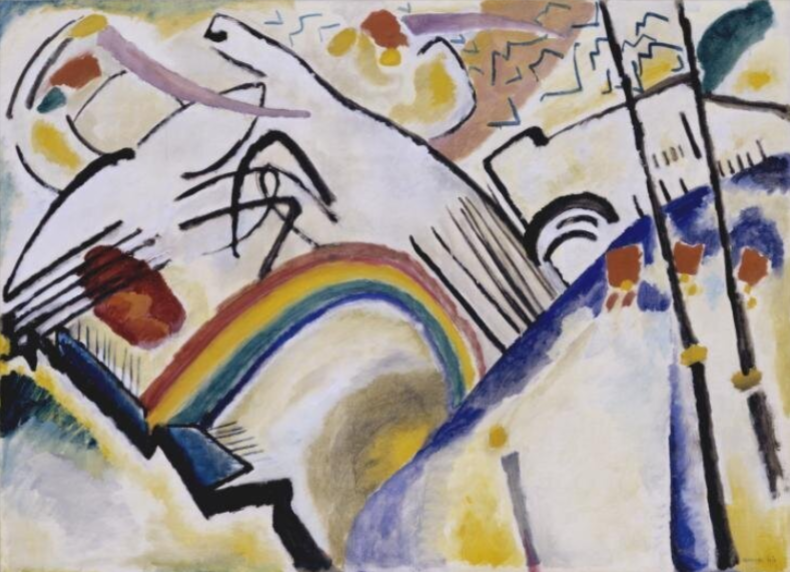What Is Expression?
Expression by definition is the action of making known one's thoughts or feelings. Most often in people expression is a look on someone's face that conveys a particular emotion. In art expression is the conveying of feeling in a work of art, in a performance, in a piece of music and in many other mediums.1
The main theory of expression in art is that Expressionism focuses on the function of artworks as vehicles for artists’ emotions, allowing their emotions to be communicated to audiences.
Is x an artwork if it transmits emotion?
18:36 - Is it possible for an artwork’s purpose to be indeterminable? If so, does this make it impossible to appreciate?
22:30 - Is it possible to create an artwork without any purpose?
Is x a work of art if it communicates and transmits the intended emotion by the artist?
we know have three conditions for an artwork
1 the artist
2 an audience
3 a shared state or feeling
However Noël Carroll
23:14 - What do we do if we cannot trust an artist’s explanation of the purpose of their artwork?
25:26 - Could one artwork be considered better than another if they’re both fulfilling their purposes effectively, but one has better purposes than the other? 2
With the turn of the century in Europe, shifts in artistic styles and vision erupted as a response to the major changes in the atmosphere of society. New technologies and massive urbanization efforts altered the individual's worldview, and artists reflected the psychological impact of these developments by moving away from a realistic representation of what they saw toward an emotional and psychological rendering of how the world affected them. The roots of Expressionism can be traced to certain Post-Impressionist artists like Edvard Munch in Norway, as well as Gustav Klimt of the Vienna Secession.
Edvard Munch in Norway
The late-19th-century Norwegian Edvard Munch emerged as an important source of inspiration for the Expressionists. His vibrant and emotionally charged works opened up new possibilities for introspective expression. In particular, Munch's frenetic canvases expressed the anxiety of the individual within the newly modernized European society; his famous painting The Scream (1893) evidenced the conflict between spirituality and modernity as a central theme of his work. By 1905 Munch's work was well known within Germany and he was spending much of his time there as well, putting him in direct contact with the Expressionists. In addition to Munch, the Flemish James Ensor was also an early influence that was studied and built upon.
Gustav Klimt in Austria
Another figure in the late-19th century that had an impact upon the development of Expressionism was Gustav Klimt, who worked in the Austrian Art Nouveau style and led the Vienna Secession. Klimt's lavish mode of rendering his subjects in a bright palette, elaborately patterned surfaces, and elongated bodies was a step toward the exotic colors, gestural brushwork, and jagged forms of the later Expressionists. Klimt was a mentor to painter Egon Schiele, and introduced him to the works of Edvard Munch and Vincent van Gogh, among others, at an exhibition of their work in 1909.
The Advent of Expressionism in Germany
Although it included various artists and styles, Expressionism first emerged in 1905, when a group of four German architecture students who desired to become painters - Ernst Ludwig Kirchner, Fritz Bleyl, Karl Schmidt-Rottluff, and Erich Heckel - formed the group Die Brücke (The Bridge) in the city of Dresden. A few years later, in 1911, a like-minded group of young artists formed Der Blaue Reiter (The Blue Rider) in Munich, after the rejection of Wassily Kandinsky's painting The Last Judgment (1910) from a local exhibition. In addition to Kandinsky, the group included Franz Marc, Paul Klee, and August Macke, among others, all of whom made up the loosely associated group.3
Sources
1 https://languages.oup.com/google-dictionary-en/
2 https://www.youtube.com/watch?v=sJDaM-xyeNw
3 https://m.theartstory.org/movement/expressionism/history-and-concepts/
Image
Edvard Munch, The Sick Child, 1907
https://www.tate.org.uk/art/artworks/munch-the-sick-child-n05035
Fabiano Millani
https://useum.org/artwork/Musicos-Fabiano-Millani
Wassily Kandinsky, Cossacks, 1910-1
https://www.tate.org.uk/art/art-terms/e/expressionism






